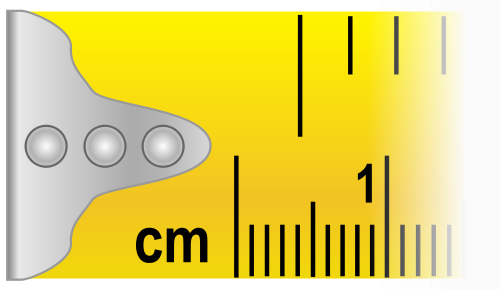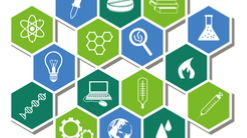Teacher Tips!
Many activities have a teacher view and a student view, and teachers can switch between those views by clicking the blue button in the upper-right. Students will not see this option - only teacher accounts see both views. The teacher view will start with overview text, if available, to frame the activity and get you started. This view will also have teacher tips and suggested answers to student questions spread throughout the activity. The teacher text interleaved with student-facing text will be in italics and should appear as a different color on your screen. Teacher tips are designed to help you deliver a learning experience that is best suited for your classroom.
Printing Reminder
Whichever view you see on your screen is what will print. You can print this activity without teacher tips by selecting the student view, or print with teacher tips by switching to teacher view. Simply use the standard print function available for your web browser. No extra steps are required.
Teacher Overview:
Your students can try this assessment before starting the Mission. A similar but not identical assessment is found in the Conclusion.
1. You are using this centimeter tape to measure a growing plant. To what level of precision can you be reasonably confident?
- Centimeter
- Half centimeter x
- Tenth centimeter
- Half a millimeter
2. The ancient Greek Eratosthenes made a reasonable estimate of the size of the Earth. What would limit an estimate of this kind?
- The precision of instruments x
- Changes in the Earth
- Human prejudice
- The definition of a meter
3. In 1473, Abraham Zacuto began working on solar declination tables. They showed the position of the sun throughout the year. What would this tell sailors?
- Time
- Latitude x
- Longitude
- Position of Venus
4. In 1492, Columbus recorded his best estimates of how far his ships traveled each day. His technique was "dead reckoning" - estimating speed by how fast a buoy moved from the rear of the ship. What would most limit the accuracy of his estimates?
- The size of the buoy
- The size of the ship
- Timing the buoy x
- Seeing through mist
5. Ten years ago, all scales and balances on Earth were calibrated to compare to:
- The mass of the Earth
- A block of platinum-iridium x
- A cesium clock
- The mass of the electron
6. You are lost! But you have your phone and it tells you your location to share with 911. What measurement is most important to help them find you?
- The circumference of the Earth
- The bandwidth of your phone signal
- The time it takes your signal to reach a satellite x
- Diffraction through the atmosphere
7. A technology that really improved explorers' ability to determine how far west they had sailed was:
- A better sail
- A better telescope
- A better clock x
- A better water wheel
8. A very powerful drug is delivered in tiny tablets. What could a manufacturer assume about the product?
- Each tablet would have exactly the same dose.
- The technology would keep variation very small. x
- The tablets would vary significantly in dosage.
- Inert ingredients would control the dosage.
9. In a museum in Paris under glass was a mass that weighed “exactly” one kilogram. Why would we put quotation marks around "exactly"?
- It would vary if it were on the moon.
- It would change slightly over time. x
- It would be measured differently by different scientists.
- There is a limit to how precisely it is measured.
10. Traditionally temperature has been measured in Kelvin, defined by the "triple point" of water. This is really an indirect way of describing:
- Its molecular structure
- Its energy x
- Its evaporation rate
- Its inertia
11. The most common things we measure are mass (kilogram), distance (meter), light (candela), concentration (mole), temperature (Kelvin), charge (ampere), and time (second). Of these measurements, which can we measure to the greatest precision?
- Mass
- Distance
- Light
- Time x
12. Which of the common measurements is most closely associated with a human's ability to sense it?
- Mass
- Distance
- Light x
- Time
13. Which of the common units is actually a prediction about a perfectly pure substance?
- Kelvin
- Mole x
- Candela
- Ampere
14. In the past century, the kilogram mass artifact maintained in Paris as a standard has lost about 50 micrograms - the mass of an eyelash. What effect would this have on scientific research?
- It would make measurements less precise.
- It would make measurements less accurate. x
- It would force changes in other standards.
- Measurements would be more precise but less accurate.
15. The inertia of an object depends on its mass. That means we can define a mass by:
- Its movement
- Its energy x
- Its temperature
- Its size
16. Scientists in Montana and Mongolia are working on the effects of minute concentrations of a pollutant on the environment. What unit would be most important as they share results?
- Candela
- Ampere
- Mole x
- Kelvin
17. For over 100 years the definition of the ampere involved the effect of an extremely tiny charge through a theoretically infinite length of wire in newtons. Why would this definition be inaccurate?
- A charge is different in different areas.
- It depends on the accuracy of another unit. x
- Wires change over time.
- Newtons are no longer used to define force.
18. Today scientists use universal constants rather than artifacts to insure accuracy in measurement. Which of the following is a constant?
- Speed of light x
- Mass of the Earth
- Charge of a battery
- Distance to the sun
Matching
Which unit of measurement would be most important for precise measurements to answer these questions?
| Unit |
| Candela |
| Ampere |
| Kilogram |
| Kelvin |
| Second |
| Mole |
| Meter |
| Research question |
| What concentration of a pesticide prevents reproduction in a pond animal? mole |
| What elements would be liquid on the planet Mercury? kelvin |
| How can we classify radio signals received from deep space? meter |
| How much fuel is needed to propel a space vehicle to the edge of the solar system? kilogram |
| How does alcohol suppress signals in human neurons? ampere |
| How can the accuracy of GPS signals be improved? second |
| How does silt affect photosynthesis in river plants? candela |










